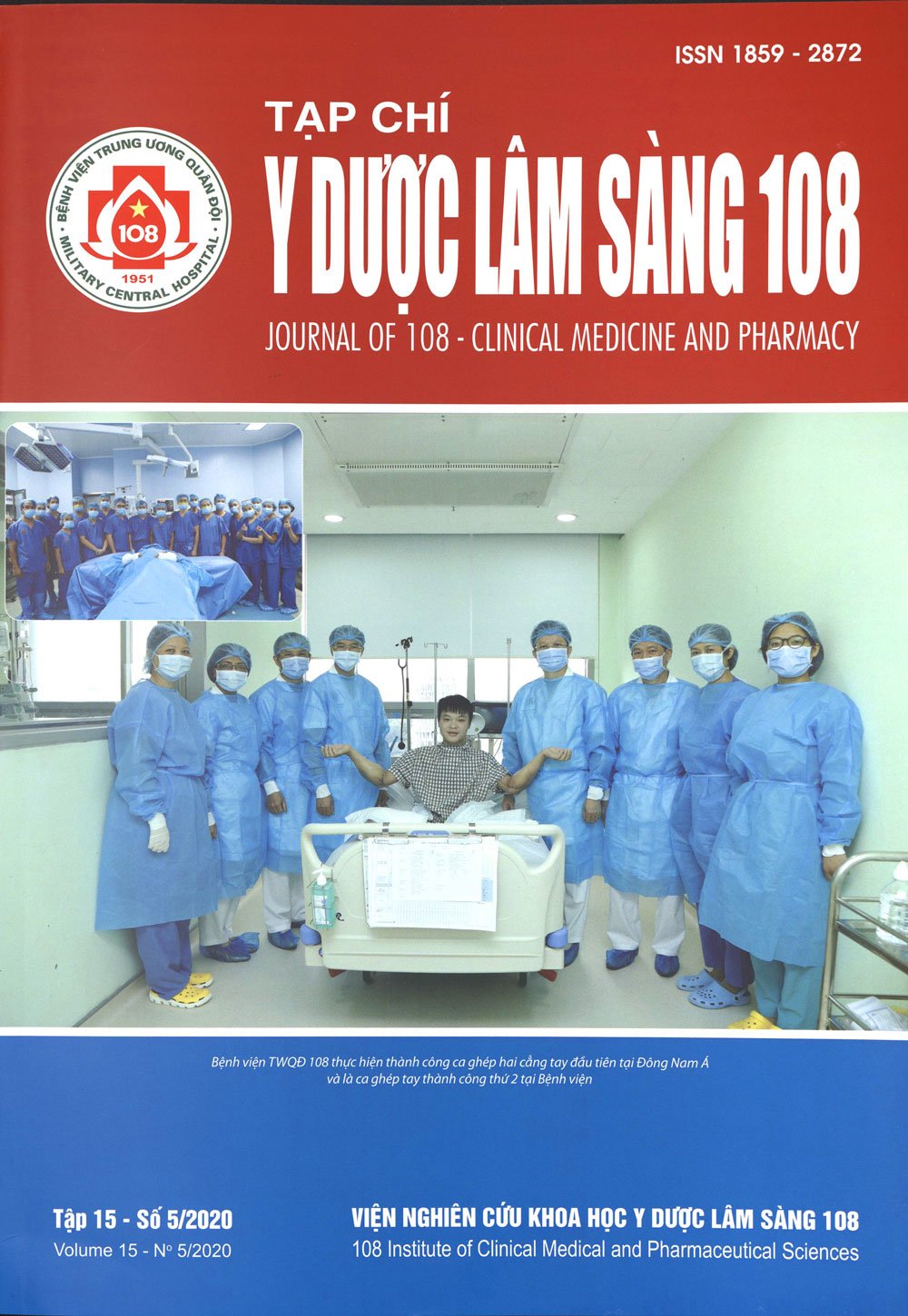Studying the value of thoracic computed tomography in diagnosis of solitary pulmonary nodules larger than 8mm in diameter
Main Article Content
Keywords
Abstract
Objective: To identify the value of multiple slices computed tomography in diagnosis of solitary pulmonary nodules image. Subject and method: 165 patients were examined and treated at National Lung Hospital from November 2016 to December 2019 that have a solitary pulmonary nodule on chest CT and have results of pathology (after biopsy and/or after surgery). Method: A prospective study, cross-sectional description. Result: Solitary pulmonary nodules had a benign rate of 51.5% and malignancy of 48.5%. The average age of disease 53.5 ± 1.4 years. The most common age group was 49 - 69 years old (p=0.946). Male/female ratio ~ 1.8:1. CT has a sensitivity of 98.7%; specificity 75.3%; positive predicted value 79.0%, negative predicted value 98.5% and accuracy 86.7%. With the method of taking late artery phase CT scan, the sensitivity value was 90.8%; specificity 78.2%; positive predicted value 85.2%; negative predicted value was 86.0% and accuracy was 85.5%. With dynamic CT method, sensitivity values 92.3%; specificity 68.2%; positive predicted value 63.2%; negative predicted value 93.7% and accuracy 77.1%. Patients who applied the method of late in artery had the ability to detect cancer 1.95 times higher than patients applying the dynamic CT method (p>0.05). Conclusion: Solitary pulmonary nodules are often seen clinically with high malignancy (48.5%). Multislices computed tomography has high value in the differential diagnosis of a benign or malignant pulmonary nodule, especially in late artery phase CT.
Article Details
References
2. Christensen JA et al (2006) Characterization of the solitary pulmonary nodule: 18F-FDG PET versus nodule-enhancement CT. AJR 187: 1361–1367.
3. Shan F, Zhang Z, Xing W et al (2002) Differentiation between malignant and benign solitary pulmonary nodules: Use of volume first-pass perfusion and combined with routine computed tomography. Eur J Radiol 81(11): 3598-3605.
4. Webb WR, Higgins SB (2017) Thoracic imaging: Pulmonary and cardiovascular radiology. Radiology 3: 1093-1217.
5. Garrigós EG et al (2018) Best protocol for combined contrast-enhanced thoracic and abdominal CT for lung cancer: A Single-Institution Randomized Crossover Clinical Trial. AJR 210: 1226-1234.
6. Rehman I et al (2011) Accuracy of Computed Tomography in diagnosing malignancy in solitary pulmonary lesions. J Pak Med Assoc 61(1): 48-51.
7. Jeong YJ, Lee KS et al (2005) Solitary Pulmonary Nodule: Characterization with combined wash-in and washout features at dynamic multi–detector row CT. Radiology 237: 675–683.
8. Dabrowska M et al (2015) Diagnostic accuracy of contrast-enhanced computed tomography and positron emission tomography with 18-FDG in identifying malignant solitary pulmonary nodules. Medicine 94(15): 1-7.
9. Shi ZT et al (2016) Differential diagnosis of solitary pulmonary nodules with dual-source spiral computed tomography. Experimental and therapeutic medicine 12: 1750-1754.
10. Hoque MS et al (2014) Role of CT scan in the evaluation of lung tumor with cytopathilogical correlation. Faridpur Med. Coll J 9(1): 37-41.
 ISSN: 1859 - 2872
ISSN: 1859 - 2872
